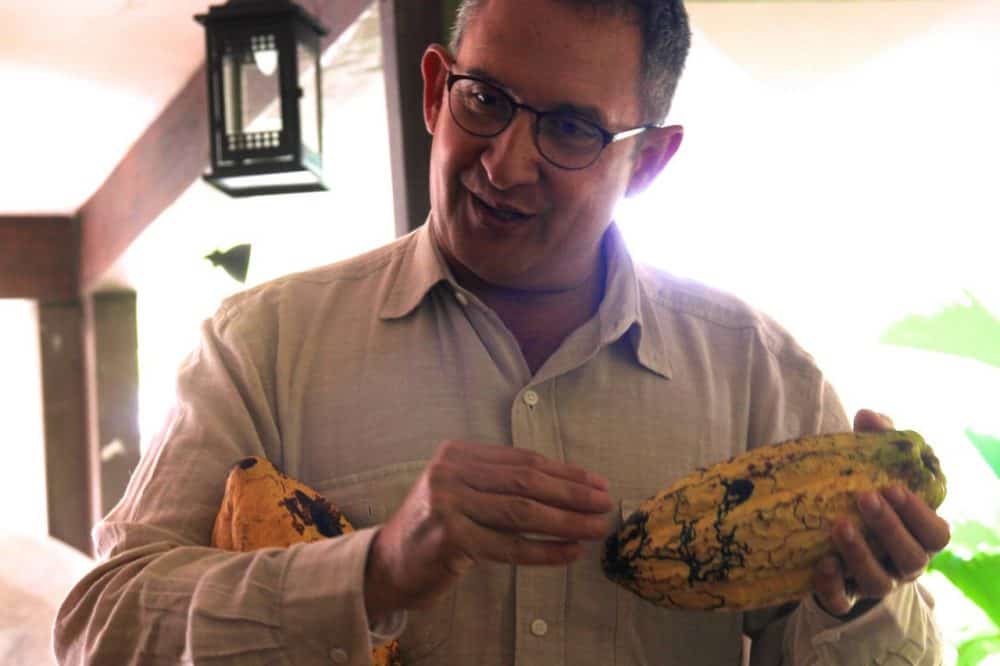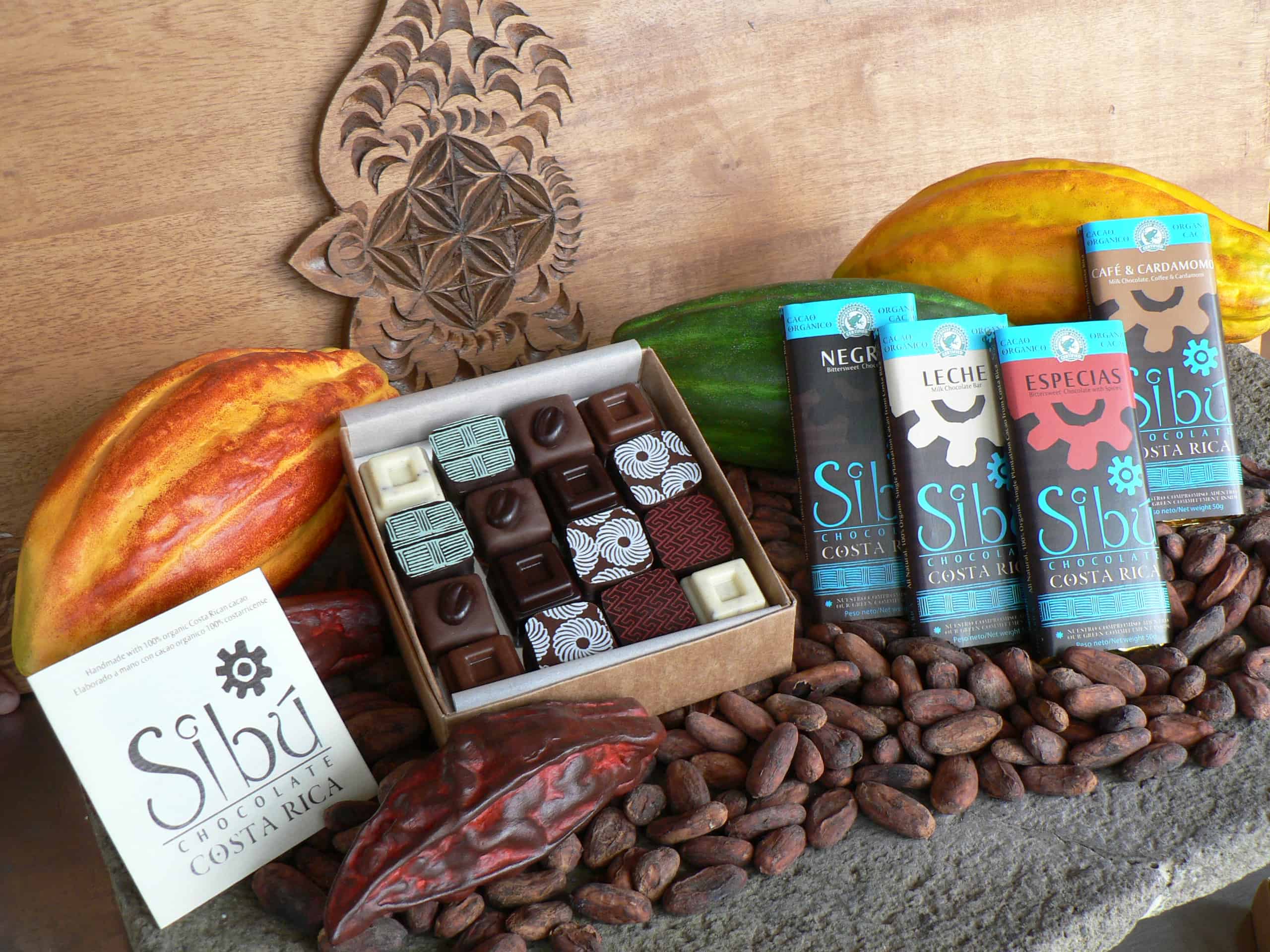When we arrived at Sibo, Julio Fernandez Amón handed us a cup of hot chocolate. But this was not the Swiss Miss cocoa we were accustomed to. No mini-marshmallows bobbed on the surface. The liquid wasn’t heavy on the sugar, nor was it boiling hot. “It’s very different, no?” asked Fernandez, looking pleased. Different. And delicious.
Fernandez is a bespectacled 57-year-old with an easy smile and a dry sense of humor. When visitors sign up for a Sibú tour, he doesn’t lead people through the workshop or make his employees smile for the camera. The “tour” is something between a lecture and a performance. He tells stories. He uses props. He tells jokes.
“Dark chocolate absorbs all the scents and flavors around it,” he said. “If a chocolate is made near flowers, it will have hints of those flowers.”
Costa Rica is a tropical country, and you might imagine it’s packed with chocolatiers. This illusion intensifies at the airport and souvenir shops, where multicolored boxes of Britt chocolates are delicately arranged. For years, a widespread fungal invasion has damaged local harvesting of cacao – a gourd-like fruit whose dried beans are the main ingredient for chocolate. Cacao farming is difficult work, and chocolate makers are few and far between.
Educated as a historian, Fernandez teamed up with journalist (and former Tico Times contributor) George Soriano to establish an “artisan chocolate company” in 2008. Neither man had much experience with chocolate, but they wanted to produce something traditional, sustainable, and made entirely in Costa Rica. Their hilltop headquarters has the look of a small hacienda, an elegant building nestled in flowers and greenery. Fernandez lives next door, in a terracotta-roofed cottage inspired by the architecture of La Antigua, Guatemala.
Over the course of nearly two hours, Fernandez told the story of chocolate, from Mesoamerican caciques sipping hot cocoa to Swiss inventors Henri Nestlé and Daniel Peter collaborating on milk chocolate in the 1870s. With a honed skill for storytelling, Fernandez described some of the stranger arcana of chocolate consumption – such as how many cacao beans a colonial prostitute cost and the taste of chocolate bars carried by U.S. paratroopers during World War II. (Not good, it turns out).
Each of the seven guests had a plate full of chocolate, and at the end of each mini-lecture, Fernandez instructed us to eat one. The flavors tasted so much more significant, knowing the kinds of chocolate that Louis XIV favored and how Rudolf Lindt accidentally invented the conching machine. The tiny bonbons seemed less like naughty treats and more like archaeological relics that happened to give us a sugar high.
Despite the decadent veneer, Sibo is a health-conscious operation: The menu includes one of the tastiest vegan burgers this critic has ever tasted. Fernandez took orders and returned with lunch platters.
“I have to admit the service here is not very good,” Fernandez quipped. “I know, because I’m the waiter.”

More information about their Costa Rican Chocolate and tours can be found on their website.






